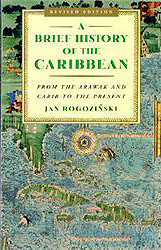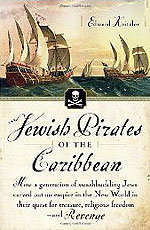Caribbean
Caribbean Ports: ° Anguilla ° Antigua and Barbuda ° Antilles ° Aruba ° Bahamas ° Barbados ° Cuba ° Dominica ° Dominican Republic (Santo Domingo) ° Grenadines ° Guadeloupe ° Haiti ° Jamaica ° Martinique ° Netherlands/Antilles ° Puerto Rico ° Saint Kitts ° St. Lucia ° St. Martin ° St. Thomas ° St. Vincent and the Grenadines ° Tortola ° Trinidad and Tobago ° Turks and Caicos
Saint Martin
The island's first inhabitants -- the Arawaks -- migrated from the Amazon's Orinoco river basin about a thousand years ago. They island-hopped north through the Caribbean, living peacefully off the bounty of the surrounding sea. The Arawaks who came to St. Maarten called their new home "Sualouiga," or "Land of Salt," naming it after the island's abundant salt pans.
The first people to settle were a tribe of Arawak Indians who left their homeland in the Orinoco basin of South America and kept migrating upwards along the chain of islands in the Caribbean.
West Indian Directing Carib women.

They gave it the name "Sualouiga" meaning "Land of Salt" for the salt-pans and the brackish water they found here in great abundance.
The Arawaks were a relatively cultured people who introduced agriculture, fashioned pottery and whose social organization was headed by hereditary chieftans who derived their power from personal deities called zemis. The Caribs, on the contrary, concentrated on warfare. They killed and ate the Arawak men, then married the Arawak women
The surviving language was Arawak.
In the mid-sixteenth century pirates, privateers and smugglers were attracted by the increasing volume of shipping, especially since cargo included Mexican or Peruvian silver. Spanish defenses, although extensive, could not prevent all raiding in so large an area. Sir John Hawkins, Sir Francis Drake, Sir Henry Morgan and William Dampier were among the English buccaneers; at the same period the Dutch "Sea Beggers" (Geuzen) and French Huguenot privateers were active.
West Indies and Caribbean. A. J. Johnson. 1864.

Christopher Columbus sighted the island on his second voyage in 1493; On November 11, 1493, the holy day of St. Martin of Tours, he claimed it for Spain, and it is from this day that the island bears its name. He never actualy set foot on the island, but claimed it in passing.
The Spanish took little interest in St. Martin, so the Dutch, seeking an outpost halfway between their colonies in Brazil and Nieue Amsterdam (now New York), occupied the island in 1631.
The Dutch West India Company installed Jan Claeszen van Campen as governor, erected their first fort on the site of Fort Amsterdam, and began to mine salt.
Before long, the Spanish, who wished to maintain their state monopoly in this essential preservative, became aware of the incursion and in 1633 they recaptured the island, expelling all of the Dutch, who then moved on to occupy Curacao.
Over the next fifteen years, a number of abortive attempts were made by the Dutch to reclaim their lost possession, notably an assault led by Peter Stuyvesant in 1644 in which the future governor of Nieue Amsterdam lost his leg.
The Spanish Commander, who was regularly besieged during this period, asked permission after his last victory to abandon the island, and in 1647 this right was finally conceded to him by the King of Spain. Laborers were brought in from Puerto Rico to dismantle the fortress, and the Spanish set sail, leaving behind, according to legend, a small contingent of French and Dutch who hid on the island and then sent out to neighboring colonies for reinforcements.
With the end of the Eighty Years' War between Spain and the Netherlands, the Spanish no longer needed a base in the Caribbean. They left St. Maarten, and the island was soon claimed by both the French (who sailed over from St. Kitts) and the Dutch (from St. Eustatius). The two powers ultimately signed a treaty in 1648 which divided the island between them.
Initially, the neighbours did not coexist peacefully, and the territory changed hands sixteen times between 1648 and 1816. Nonetheless, the Dutch side of the island soon became an important trading center for salt, cotton, and tobacco. Wealth also arrived with the establishment of sugar plantations, worked by slave labor.
Every major European war of the eighteenth century was reflected in heavy fighting in the Caribbean and every peace treaty included transfers of West Indian islands.
When slavery was abolished in the mid-19th century, the plantations closed down and St. Maarten's prosperity ended.
Uprising: Kinkaid in the West Indies
(Volume 2 - Fiction)
Michael Winston
"Uprising" is the second book of the high-regarded Jonathan Kinkaid series, where Kinkaid's daring and proficiency are tested to the limit when he is given command of the lightly armed brig, Swift, of 12 guns. Ordered to deliver a diplomat bearing a copy of the Declaration of Independence to the Dutch free port of St. Eustatia in the Caribbean, his mission seems easy enough. But then why have they taken on over 100 muskets and heavy weapons? All Kinkaid is told is that he must assist a major of marines with a secret assignment that takes them to the wet, steaming jungle island of Dominica, inhabited by cannibalistic Caribe Indians. Kinkaid must also gain information of any pirate activity in the Caribbean that might interfere with American shipping.
1899. World's Fleet. Boston Daily Globe
Lloyds Register of Shipping gives the entire fleet of the world as 28,180 steamers and sailing vessels, with a total tonnage of 27,673,628, of which 39 perent are British.
| Great Britain | 10,990 vessels, total tonnage of 10,792,714 |
| United States | 3,010 vessels, total tonnage of 2,405,887 |
| Norway | 2,528 vessels, tonnage of 1,604,230 |
| Germany | 1,676 vessels, with a tonnage of 2,453,334, in which are included her particularly large ships. |
| Sweden | 1,408 vessels with a tonnage of 643, 527 |
| Italy | 1,150 vessels |
| France | 1,182 vessels |
For Historical Comparison
Top 10 Maritime Nations Ranked by Value (2017)
| Country | # of Vessels | Gross Tonnage (m) |
Total Value (USDbn) |
|
|---|---|---|---|---|
| 1 | Greece | 4,453 | 206.47 | $88.0 |
| 2 | Japan | 4,317 | 150.26 | $79.8 |
| 3 | China | 4,938 | 159.71 | $71.7 |
| 4 | USA | 2,399 | 55.92 | $46.5 |
| 5 | Singapore | 2,662 | 64.03 | $41.7 |
| 6 | Norway | 1,668 | 39.68 | $41.1 |
| 7 | Germany | 2,923 | 81.17 | $30.3 |
| 8 | UK | 883 | 28.78 | $24.3 |
| 9 | Denmark | 1,040 | 36.17 | $23.4 |
| 10 | South Korea | 1,484 | 49.88 | $20.1 |
| Total | 26,767 | 87.21 | $466.9 | |














 Copyright ~ 1998-2018.
Copyright ~ 1998-2018. 